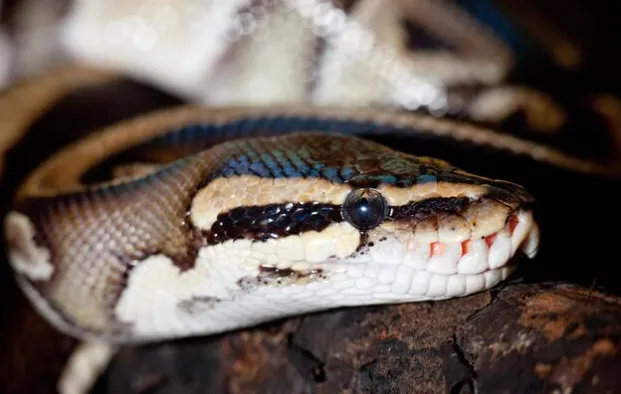
Table of Contents
Scientific Classification
- Kingdom: Animalia
- Phylum: Chordata
- Class: Reptilia
- Order: Squamata
- Suborder: Serpentes
- Family: Pythonidae
- Genus: Python
- Species: P. regius
Quick Overview
The Ball Python (Python regius), also known as the Royal Python, is a revered serpent in the reptile-keeping community. Originating from the grasslands and savannas of West and Central Africa, these pythons have garnered immense popularity as pets due to their manageable size, docile temperament, and striking color variations.
Fast Facts
- Scientific Name: Python regius
- Lifespan: Up to 30 years in captivity
- Average Size: 3 to 5 feet
- Diet: Carnivorous (small mammals)
- Habitat: Grasslands and savannas
Did you know?
Ball Pythons earned their name from their instinctive habit of curling into a tight ball when stressed or threatened, tucking their head in the center for protection.
Appearance
Ball Pythons exhibit a range of colors and patterns, including pied, albino, and morph variations. Their relatively modest size, robust build, and distinctive markings make them sought-after among snake enthusiasts.
Size and Weight
Adult Ball Pythons typically reach lengths of 3 to 5 feet, with females being slightly larger and heavier than males.
Temperament and Behavior
Known for their gentle disposition, Ball Pythons are considered ideal for snake enthusiasts of all experience levels. They are often tolerant of handling and are known to be relatively calm and docile.
Fun Facts
Ball Pythons are adept climbers and may occasionally be found perching on elevated surfaces in their natural habitat.
Habitat and Distribution
Native to West and Central Africa, Ball Pythons inhabit grasslands, savannas, and open forests. Their nocturnal nature allows them to thrive in diverse environments.
Care Guide
Providing the right conditions is crucial for the well-being of Ball Pythons in captivity:
- Enclosure with secure hiding spots and climbing branches.
- Temperature gradient between 75-85°F.
- A basking spot reaching up to 90°F.
- Substrate for burrowing and maintaining humidity.
- Regular water source for hydration.

Diet and Nutrition
In the wild, Ball Pythons primarily feed on small mammals, birds, and occasionally reptiles. In captivity, a diet of appropriately-sized rodents, such as mice or rats, is suitable.
Fun Facts
Ball Pythons are ambush predators, relying on their heat-sensing pits to locate prey in their surroundings.
Health and Wellness
Common health concerns include respiratory infections and issues related to improper humidity levels. Regular veterinary check-ups are crucial for their well-being.
Breeding
Ball Pythons are oviparous, laying clutches of eggs. The incubation period lasts approximately 60 days, with hatchlings emerging from their eggs.
Conservation Status
While not currently classified as endangered, concerns exist regarding the pet trade and habitat loss. Responsible breeding practices contribute to the conservation of Ball Pythons.
Fun Facts
Ball Pythons are known for their docile nature during shedding, and handling during this period should be minimized.
Photo Gallery
Related Profiles
- Rosy Boa
- Kenyan Sand Boa
Share This Profile
Fascinating Facts About Ball Python
- Masterful Climbers: Despite their ground-dwelling nature, Ball Pythons are skilled climbers, demonstrating agility in both terrestrial and elevated environments.
- Egg-cellent Parenting: Ball Pythons are attentive parents, coiling around their eggs to provide protection and ensure optimal incubation conditions until hatching.
- Enchi Ball Python: A Unique and Stunning Morph of Python regius - March 27, 2025
- Emerald Tree Monitor: The Enigmatic Green Guardian of the Rainforest - March 26, 2025
- The Egyptian Cobra (Naja haje): A Fascinating Serpent - March 25, 2025
